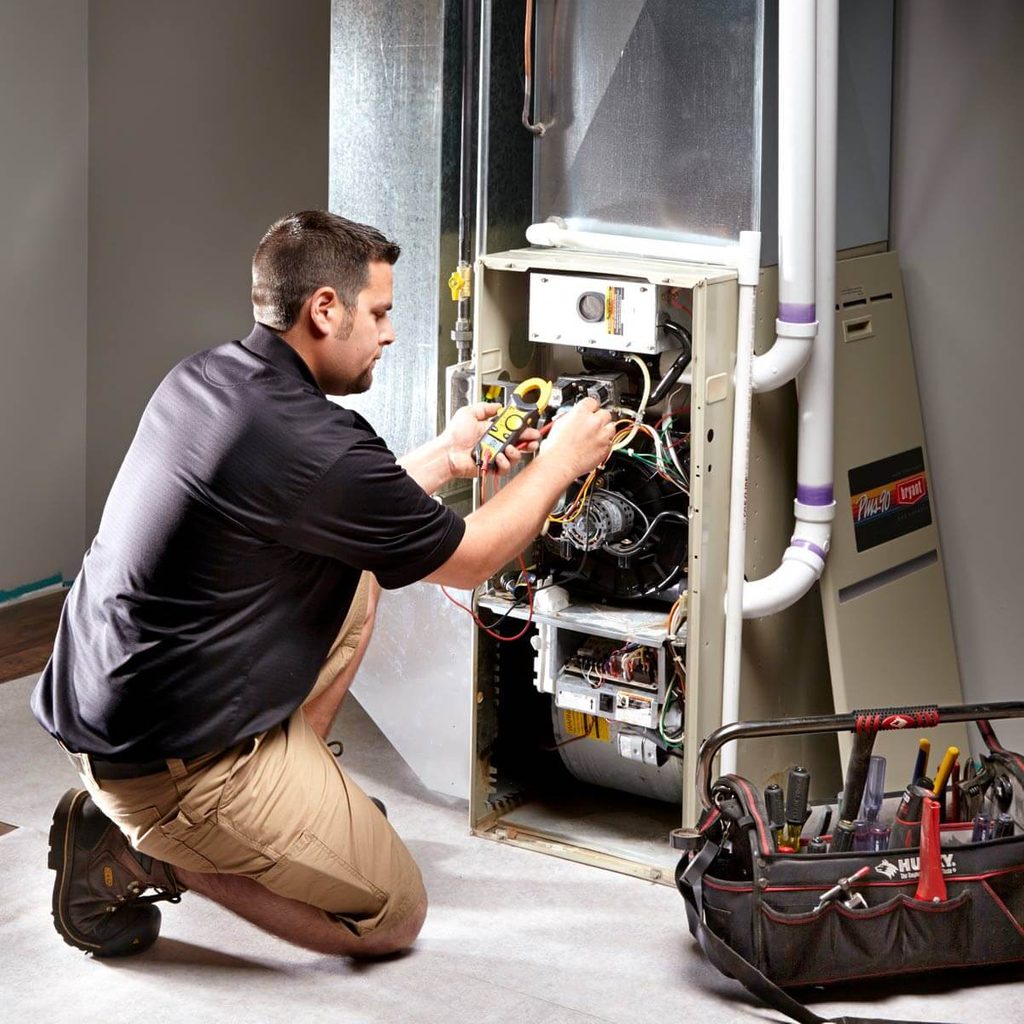What to Know Before Replacing Your Furnace
Updated: Jan. 29, 2024

No one wants to replace a furnace. Before it's that time, learn from someone else's experience and possibly save money and frustration.
Few statements elicit homeowner panic quite like, “You need a new furnace.” In addition to the major financial hit, if the need for a new furnace arises when the temperature is below freezing, there isn’t time to carefully research your purchase.
Fortunately, good maintenance and a relationship with trusted heating, ventilation and air conditioning (HVAC) experts can make the process easier. And remember that keeping your furnace well-maintained goes a long way toward making sure it’s functioning efficiently and safely as long as possible.
Family Handyman’s creative director, Vern Johnson, shares his insight on the things he wishes he knew before replacing his furnace last year, so that you can purchase the best furnace for yourself or a loved one.
On This Page
Don’t Trust Internet Pricing
Although Vern thought a new furnace cost around $10,000 to $12,000, the online estimates he found ballparked it at less than half of that.
“What? That’s it?” he thought, and jumped to the conclusion he could get away with paying no more than $4,000. In reality, the cost of the furnace was closer to $8,000 once he talked to HVAC professionals in the Twin Cities metropolitan area.
Remember that cost varies based on the level of efficiency you choose, the fuel you use, the market you live in and regional cost of living. If you don’t have a trusted HVAC pro, make sure you seek several furnace replacement bids for comparison.
Don’t Overlook Rebates
An HVAC professional will know about any rebates or other incentives available from your energy provider or your current or new furnace manufacturer. In Vern’s case, he benefited from two of these.
His previous Bryant furnace, which kept his home warm for more than 15 years, had an equipment flaw causing a part to rust and prevented all the carbon monoxide from venting out of the house. Vern didn’t know until his HVAC technician came to do an annual inspection.
He had two options. He could have had that part fixed or replaced for free, leaving him with a functional yet still 15-year-old furnace. Or he could accept an $800 rebate from Bryant toward a new furnace. It made more sense to do the latter. He also used a $400 rebate from his natural gas provider to cover the cost of upgrading to a more energy-efficient furnace.
Calculate Efficiencies
The cost of a new furnace can be a budget-buster, but don’t forget to factor in how the new furnace may decrease monthly energy expenses. Monthly operating estimates can also help you decide which furnace is best for your home.
There can be other upsides to an upgrade. Vern said his new furnace operates much more quietly and keeps his house heated more evenly throughout the day.
Note: Consider getting an energy audit to find if there are other home tune-ups, such as caulking windows and doors and adding insulation, to decrease your energy costs.
Build a Service Relationship
While he’s willing to tackle many DIY projects, Vern says he’s learned that furnace installation is a job for the professionals. If you don’t have a regular, trusted HVAC technician, getting several bids will not only give you a more well-rounded understanding of pricing but also an indication of an HVAC provider’s expertise and responsiveness. It’s smart to ask neighbors and check reviews for recommendations as well.
Vern’s furnace had to be shut down after the carbon monoxide issue was discovered. He replaced his furnace quickly because of the relationship he established with the HVAC company that does his annual service inspection.
The Air Filter Is Important
Dirt can cause a furnace’s mechanical components to work harder and wear out prematurely. Every HVAC technician says the easiest and most affordable way to help your furnace run efficiently and safely for as long as possible is to change filters diligently.
Vern learned that if you don’t have anyone in the house with allergies or immune system issues, you can use basic filters that allow more air flow. Basic filters are easier on the furnace, too.
Another good tip: Do an annual test run. Start your furnace before cold weather hits to make sure it’s functioning well. You’ll have better luck reaching a technician quickly for trouble-shooting and tuneups before a cold snap, when the demand for service calls spikes.
